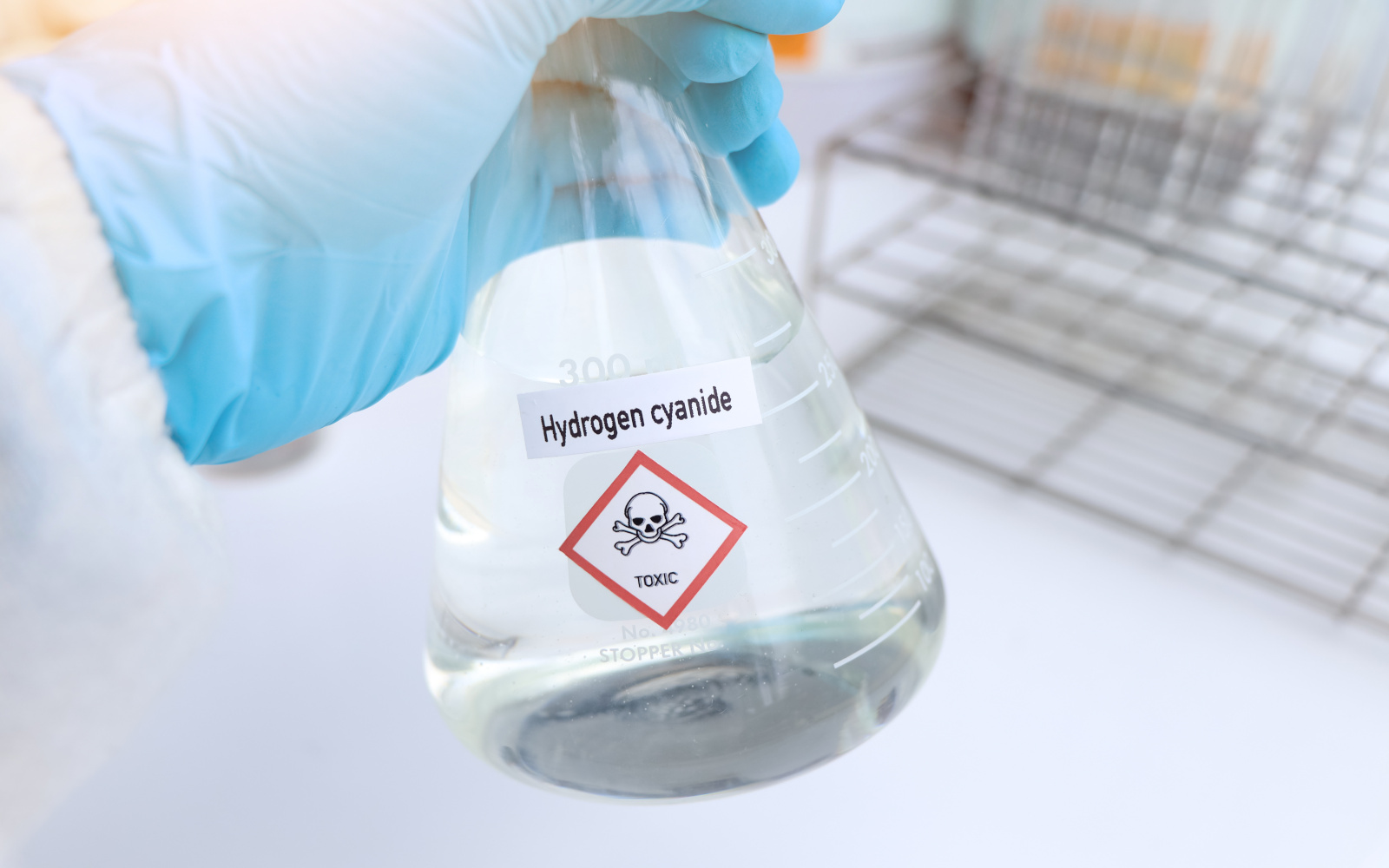Hydrogen cyanide (HCN) is a highly toxic and potentially lethal gas commonly used in various industrial applications. Due to its extreme toxicity, it poses significant health risks and requires careful handling and safety precautions.
This article discusses the dangers associated with hydrogen cyanide gas leaks, its industrial uses, safety measures, and best practices for managing such incidents. Our objective is to provide safety managers, industrial hygienists, and other professionals with the necessary information to safeguard against the hazards of HCN.
Common Industrial Uses of Hydrogen Cyanide
Hydrogen cyanide is utilized in several industries due to its chemical properties. Key applications include:
- Chemical Manufacturing: HCN is a precursor to many chemical compounds, including acrylonitrile, which is used in plastics and synthetic fibers.
- Mining and Metallurgy: Used in the extraction of gold and silver through the cyanidation process.
- Fumigation: Employed in pest control and fumigation processes.
- Pharmaceuticals: Involved in the synthesis of various pharmaceutical products.
- Plastics and Resins: Used in the production of resins, synthetic fibers, and other polymer products.
Despite its utility, hydrogen cyanide is extremely hazardous and requires stringent safety measures to prevent accidental exposure.
The Hazards of Hydrogen Cyanide Gas
Hydrogen cyanide is a colorless or pale blue liquid that vaporizes at room temperature, producing a faint, bitter almond-like odor. It is highly toxic and poses severe health risks:
- Respiratory Failure: Inhalation of HCN can interfere with the body’s ability to use oxygen, leading to respiratory failure and potentially death.
- Eye and Skin Irritation: Contact with liquid HCN can cause severe irritation and burns.
- Neurological Effects: Exposure can result in symptoms such as headache, dizziness, confusion, and convulsions.
Exposure Limits and Regulations
Various regulatory bodies have established exposure limits for hydrogen cyanide to protect workers:
· OSHA (Occupational Safety and Health Administration):
-
- PEL (Permissible Exposure Limit): 10 ppm (8-hour TWA)
· NIOSH (National Institute for Occupational Safety and Health):
-
- REL (Recommended Exposure Limit): 4.7 ppm (10-minute ceiling)
- IDLH (Immediately Dangerous to Life or Health): 50 ppm
· ACGIH (American Conference of Governmental Industrial Hygienists):
-
- TLV (Threshold Limit Value): 4.7 ppm (15-minute ceiling)
Safety Measures and Best Practices

Due to its high toxicity, managing hydrogen cyanide requires a comprehensive safety approach. Key measures include:
1. Fixed Gas Detection Systems:
-
- Early Detection: Continuous monitoring for HCN can provide early detection of leaks, enabling prompt response.
- Alarm Systems: Audible and visual alarms alert personnel to evacuate or take protective measures.
2. Personal Protective Equipment (PPE):
-
- Workers handling HCN should wear appropriate PPE, including gas masks with appropriate filters, chemical-resistant gloves, goggles, and protective clothing.
3. Proper Ventilation and Containment:
-
- Effective ventilation systems are essential to disperse HCN vapors and reduce the risk of accumulation. Containment systems, such as scrubbers, can neutralize released gases.
4. Emergency Response Plans:
-
- Detailed emergency response plans, including evacuation routes, first aid measures, and coordination with emergency services, are critical for managing HCN incidents.
5. Training and Drills:
-
- Regular training and drills are essential to ensure that all personnel understand the dangers of HCN and know how to respond in the event of a leak.
Hydrogen cyanide is a vital industrial chemical but poses significant risks if not handled properly. Understanding the hazards and implementing robust safety measures, including gas detection systems, appropriate PPE, ventilation, and emergency planning, are crucial for protecting workers and facilities.
By adhering to best practices and maintaining vigilance, industries can minimize the risks associated with hydrogen cyanide exposure.
For more information on hydrogen cyanide safety and Interscan’s Accusafe and GasD 8000 detection systems, please contact us and request a quote today.


